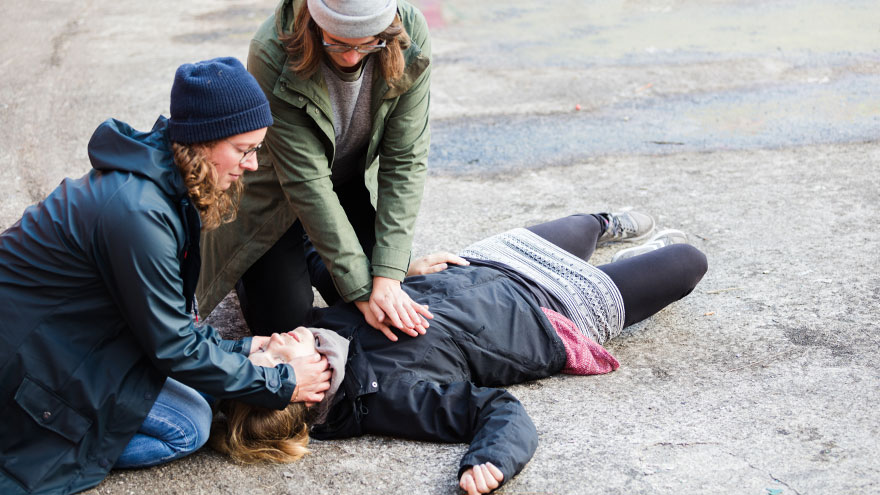Life-Saving CPR: Are Your Skills up to Date?
July 11, 2022

According to the American Heart Association, over 350,000 out-of-hospital cardiac arrests occur in the U.S. This highlights the importance of CPR to everyone, not just medical personnel. Most people do not have heart trouble at a hospital or fire station, they have it going about their everyday lives. And when someone has a heart attack outside of a hospital, their survival often depends on receiving help from a bystander.
Signs of Heart Trouble
First, how do you know when someone is experiencing cardiac arrest?The signs and symptoms of cardiac arrest are immediate and drastic, including:
- Sudden collapse
- No pulse
- Not breathing
- Loss of consciousness
And sometimes, patients can experience symptoms beforehand, such as fatigue, fainting, blackouts, dizziness, chest pain, shortness of breath or vomiting.
CPR Change
Many of us know CPR as both mouth-to-mouth and pumps to the chest, but the rule now is hands-only. Can you explain the change?Hands-only CPR is exactly what the name says -- it's CPR without mouth-to-mouth.
The American Heart Association recommends using only your hands. So if you see someone suddenly collapse, it’s recommended to call 9-1-1 and push hard and fast in the center of their chest. Doing this will get blood flowing back to the brain, lungs and other organs for someone having heart problems.
Performing CPR on Adults vs. Children
Hands-only CPR is just as effective as mouth-to-mouth and chest compressions for teens and adults who may have gone into cardiac arrest.Remember, it’s important to act fast. First, call 9-1-1 and then start chest compressions right away. If you perform CPR on someone within the first few minutes, it can double or triple their chance of survival.
Keep in mind, for infants and children younger than 12 years old, regular CPR with mouth-to-mouth, as well as chest compressions, is still recommended.
Two Steps to Save a Life
If you see a teen or adult suddenly collapse follow these two steps:- Call 911 so care providers can begin to respond. When calling 911, be specific about your location, especially if you are calling from a cell phone. Knowing the street address, building, floor and closest entry point can save precious time for first responders. Answering the dispatcher’s questions will make sure help arrives fast, and at the correct location.
- Push hard and fast in the center of the chest. The goal during CPR is 100 to 120 compressions per minute, about the same tempo as the song “Stayin’ Alive,” or “Thriller.”
Continue performing compressions as long as possible. If you tire, have someone take over compressions, if possible, and take turns until medical help arrives.
For information on a CPR course in Reno, please contact REMSA at 775-858-5700.